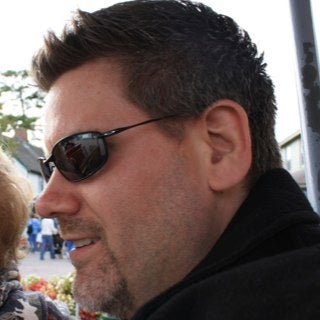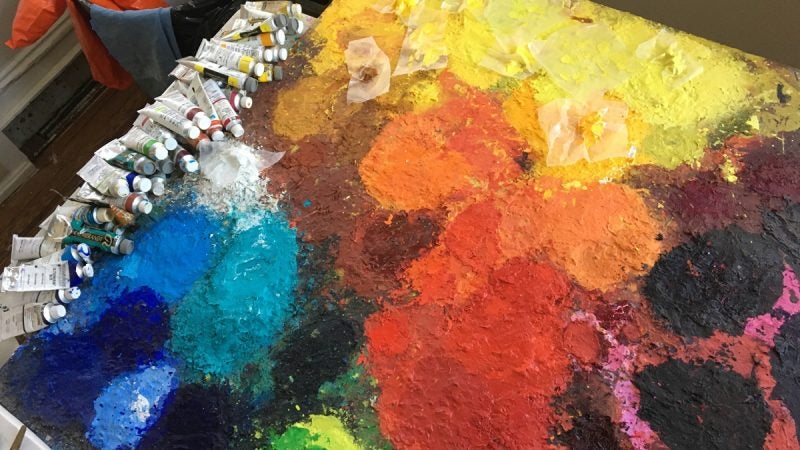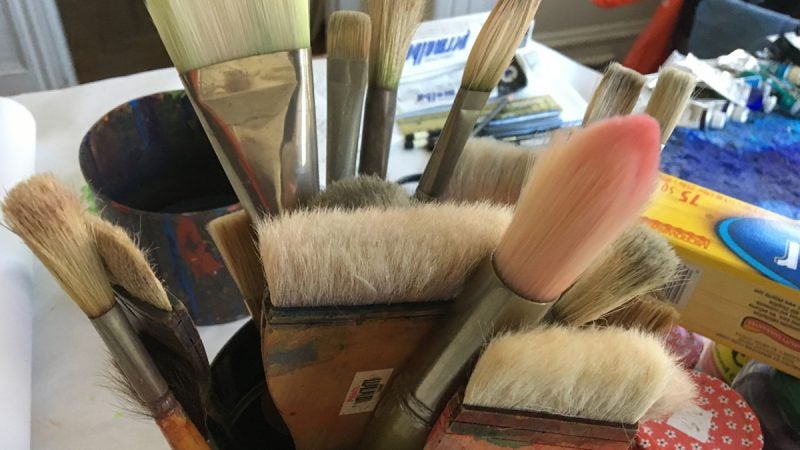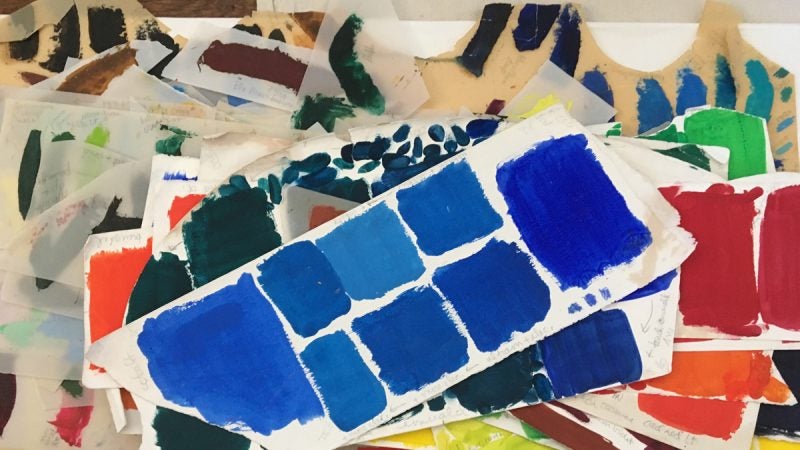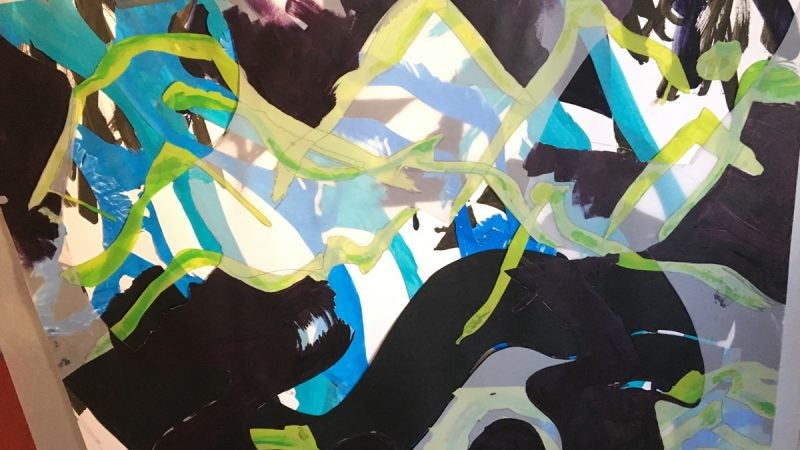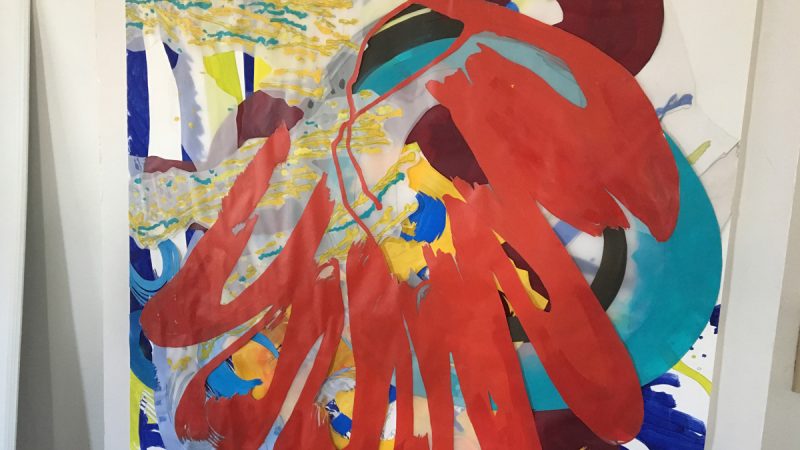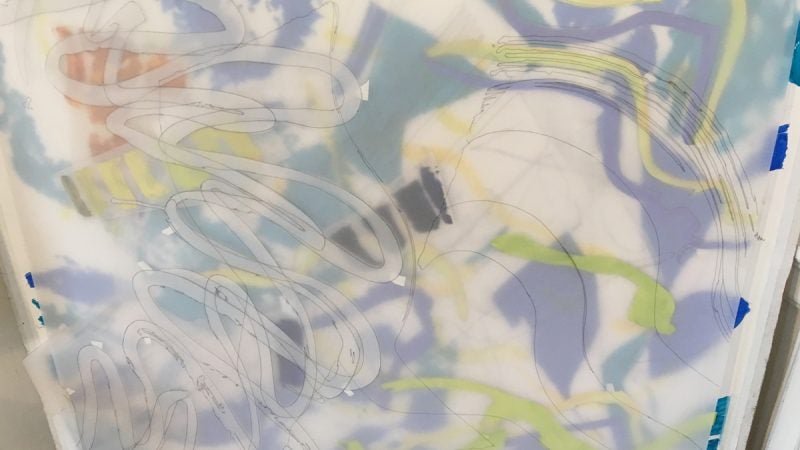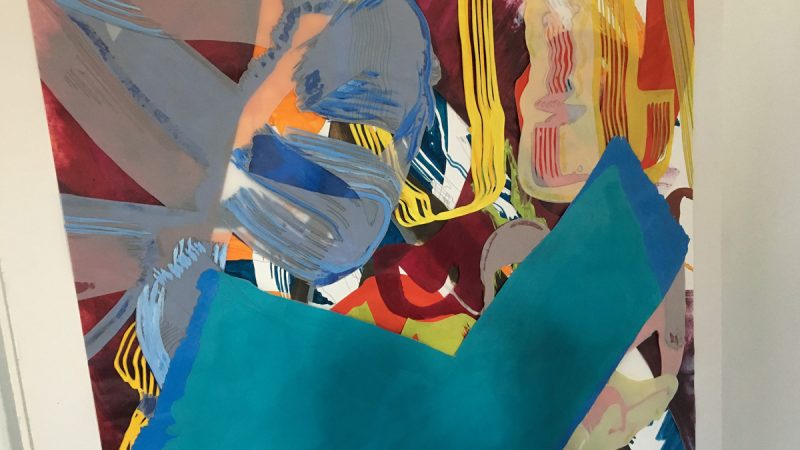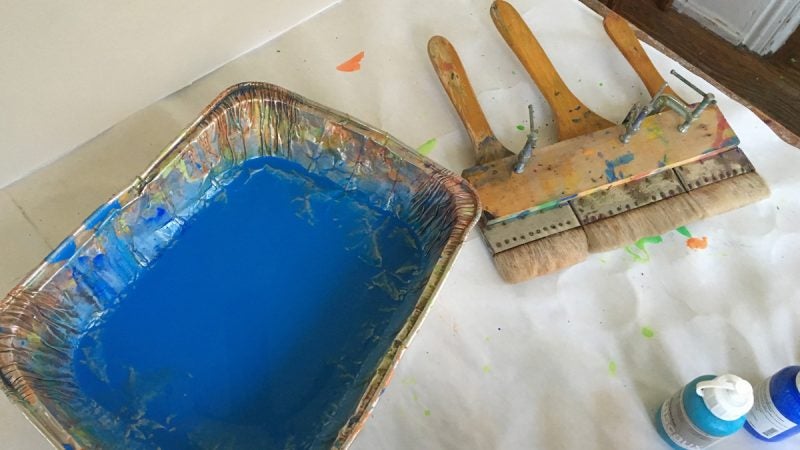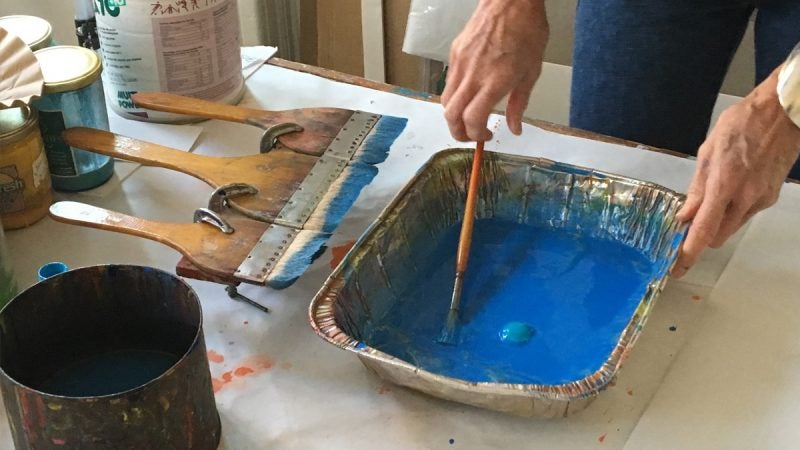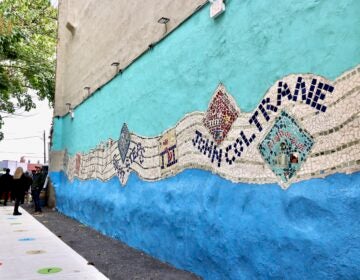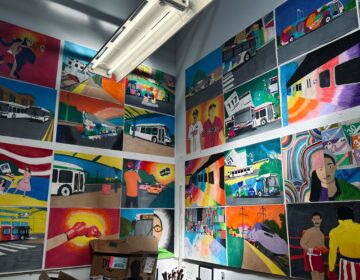Delaware artist Ellen Priest, the jazz painter
Ellen Priest uses music as other artists would use a mountain landscape or a person sitting for a portrait — as the subject of the art itself.
Ellen Priest is an abstract painter, but realized she needed a subject to paint.
She found that subject in jazz.
“We heard this fabulous jazz piece, and I’ll never forget it. All of a sudden I realized that the space in that music was the space I was after,” Priest said. That was in 1990, and she’s been painting jazz music ever since.
“For me it’s like a mountain landscape or a person sitting for a portrait, so these are really pictures of the music,” Priest said.
For this series of paintings Priest has been working with an hour long jazz suite called “The River” by Ryan Cohan. “In this music I can hear African, I can hear New Orleans, I can hear Aaron Copland, I can hear Chicago blues.”
The thought of even beginning to interpret music into a 2-D image hurts this writer’s brain, but Priest makes it work. She begins by finding music she likes and working with the composer to interpret the intent of the music. She looks through the composition itself and begins to lay the foundation.
“Conceptually each of these pieces, each square is one measure and that’s how I build it structurally,” Priest said.
The entire process can take years to get to completion, but here’s the essentials: Once she has her head in the music, so to speak, she begins what she calls “brush studies.”
Using different colors and brush types, she paints streaks, lines and shapes that might go into the finished painting. Each study takes less than a minute to create.
“I have a stack of paper on my big worktable,” she said. “I’m building a language of forms for that series so than that becomes my vocabulary.”
The next step is to trace these studies using art carbon paper, she does this on multiple layers and layers them all together. “Then I paint into that as if it’s one image.”
Watching her work, I was struck by two things that are the most important elements of this work — motion and color.
“I use color to establish the position of forms in space,” Priest said. By the time a piece is done, she has used a full pallet, “Which means something in there has red, yellow and blue.”
The whole process seems a bit chaotic when viewed from afar, but Priest says there is a “sense of efficiency about it, which sounds crazy given how much is going on in these pieces.”
The last step in this lengthy process is really where things get kicked into motion. It’s not adding to the painting, it’s actually the step where she takes away from the painting. “When I’m really turning the whole piece loose is when I’m cutting away, it’s the very last stage before I glue it. If I’ve loaded the layers properly, then when I start stripping away it all goes into motion.”
The title of the work suggests something musical, but even if you haven’t heard the music Priest finds, most people tell her the artwork is really musical. “So something’s getting across,” Priest said. She hopes it evokes in the viewer what the music has inspired in her as the artist. “I want people to be uplifted. People leave my exhibitions just feeling this kind of joy. That’s what they’ve said to me over and over and over.”
Music can be magical, it can be healing and inspirational. “It can transform all kinds of difficult emotions into something you can deal with and it brings joy into things that may not have joy.”
On some level those ideas are getting through in Priest’s artwork. “There’s a rightness to it, at some level it goes ding, I don’t know, it’s mysterious even to me.”
WHYY is your source for fact-based, in-depth journalism and information. As a nonprofit organization, we rely on financial support from readers like you. Please give today.


